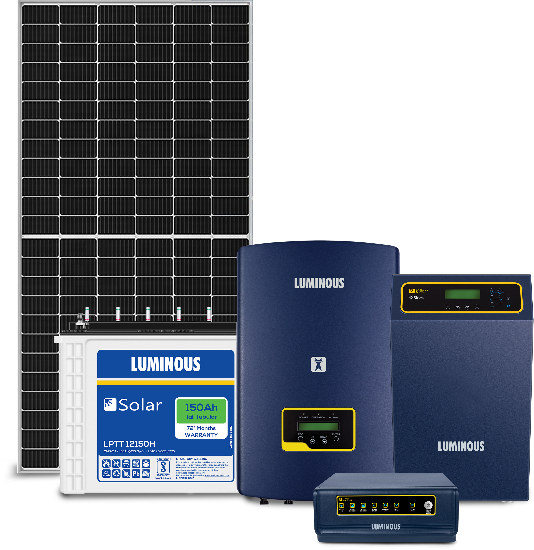The global energy demands are changing, and so are the ways we produce electricity. Now, people are looking for alternatives to traditional methods like fossil fuels. Solar energy is among the most popular ones since it’s becoming cheaper.
Moreover, companies are offering more high-quality solar energy products than ever before. This has increased the accessibility and affordability of solar energy, thereby making its demand higher and higher. But this blog is not about the demand or product. We are looking at how solar panels convert solar energy into electrical energy. Let’s get started!

What are Solar Panels?
Before we demystify how solar panels convert solar energy into electrical energy, we need to first understand what solar panels are.
You must have seen solar panels on the rooftops or in fields. They are also known as solar modules and consist of individual solar (or photovoltaic) cells. It is these small blue cells that convert solar energy into electrical energy.
Most solar panels are made of silicon in rectangular shapes. Some home solar systems are also made of expensive materials, such as indium, copper, gallium, and selenide (CIGS).
When kept together, they can power a variety of things ranging from your smartphone to even AC. Typically, solar panels have 36 to 144 cells, but this number can change depending on the type and product.
How to Convert Solar Energy into Electrical Energy Via Solar Panels?
Now that we know what solar panels are, it is time to learn how they convert solar energy into electrical energy. The first step to that is the installation of solar cells in an open area where there is plenty of sunlight.
The energy from the sun comes in the form of little packets known as photons. The material on solar cells is silicon which is known for being the best semiconductor. In solar panels, one layer of silicon is positively charged. It is called the P-type. The other layer is negatively charged and is known as the N-type. N-type gives away the electrons, while the P-side receives the electrons. This perfect combination allows the solar panels to create an electric field.
Now, when the sunlight falls on these solar cells with an electric field, the photons of the sunlight get absorbed, and this initiates the electric current. The loose electrons in the electric field further start flowing to create the electric current.
Conversion from DC to AC
It is important to note that the electrical energy that we receive from solar cells is usually Direct current (DC) electricity. And this cannot be used to power buildings and homes. This means the work does not end after the panels convert solar energy into electrical energy. This electrical energy is further converted into Alternating current (AC) electricity. For this, special solar inverters are installed.
There are different types of solar inverters, such as on-grid, off-grid, and hybrid inverters. They are attached with the panels to convert DC electricity to AC that can be further put into immediate use for home appliances. Once the conversion is done, the current runs through the electric panels and supplies power to all the connected appliances.
Interestingly, when you convert solar energy into electrical energy, the resultant power is the same power generated through the grid by your utility company. Thus, you do not need any special changes in the home to use solar energy.
Moreover, using solar energy also reduces your electricity bills considerably. This is the reason why using solar panels is one of the best electricity-saving tips experts suggest.

Factors that Impact Solar Electricity Production
No doubt that solar panels can convert solar energy into electrical energy quite efficiently, but there are some factors you need to consider ensuring they do their job perfectly.
Below are some factors you should take into consideration when planning the installation of solar systems at home or office.
- Shade: As you can guess, solar panels require sunlight to work effectively. Thus, make sure the place where you install either an on-grid, off-grid, or hybrid grid tie solar system must receive an ample amount of sunlight.
- Tilt: To convert solar energy into electrical energy in the best way possible, you need to get solar panels installed at the right tilt. For this, it is important to consider the direction of your home’s face, the location, and even the roof pitch. Ideally, your solar panels should be at the same angle as the latitude where they’re mounted. Or you can also choose pitches between 30 degrees to 45 degrees for good results.
- Equipment Quality: From the type of solar panels, you use to the cables you use, every piece of equipment can affect the performance of your solar system. Thus, invest in good quality equipment. They may be expensive, but this is just a one-time expense. Once installed, solar systems can last for as long as 25 years without much upkeep.
The Takeaway
Once you know how solar panels can convert solar energy into electrical energy, we are sure you are ready to try this magic at your own home too.
We at Luminous understand the potential of solar energy, and that’s why we have invested our best efforts to launch a wide range of solar products. From on-grid to off-grid and hybrid grid solar systems, Luminous presents you with a great selection of solar energy products in India.
What more? You can also read our blogs on electricity-saving tips and be a smart citizen of a green future. Check our website to explore it all.
Leave a Reply